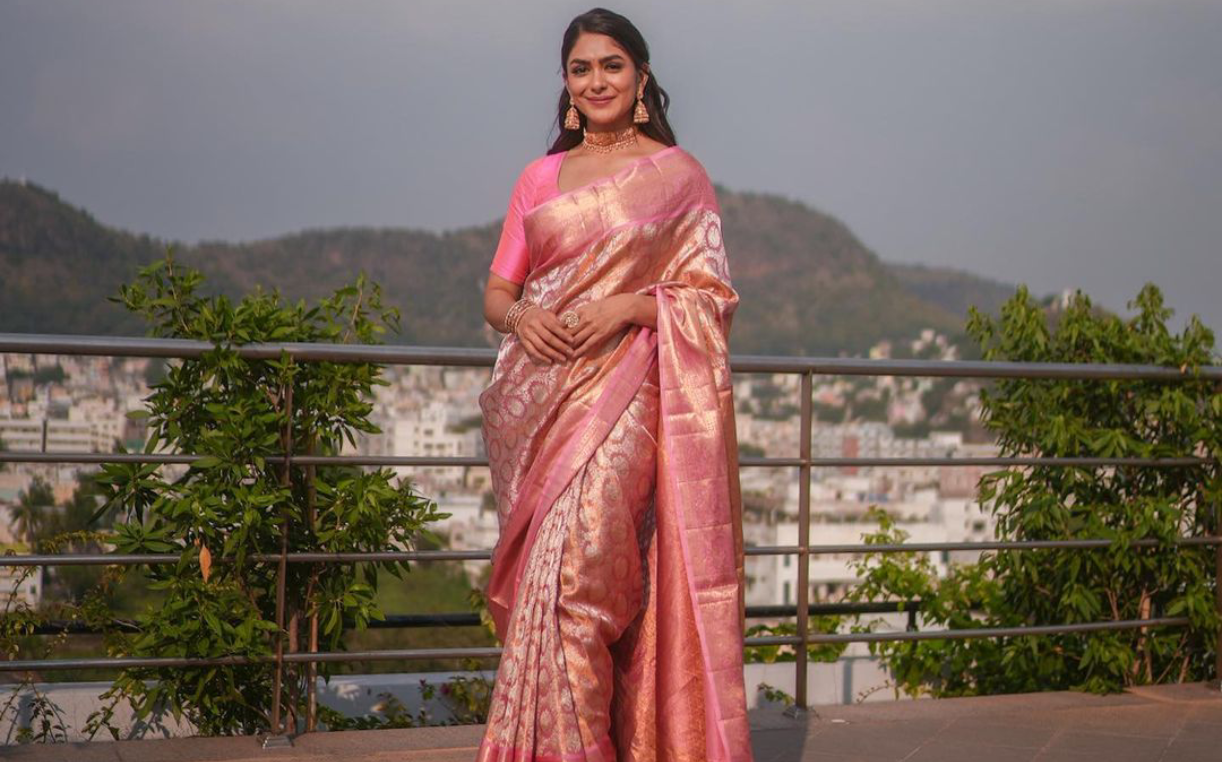South Indian weddings are known for their vibrant celebrations, cultural traditions, and, most notably, exquisite attire. At the heart of this attire is the saree, a timeless garment that has evolved across generations. Brides in South India continue to embrace the beauty of traditional sarees while also incorporating modern trends into their wedding ensembles. This fusion of old and new offers a rich array of options for brides, each saree carrying its own unique story and significance. Let’s explore the assorted styles of sarees that have graced South Indian weddings through the ages.
Kanjivaram Sarees: The Epitome of Elegance
One of the most celebrated sarees in South India is the Kanjivaram (also known as Kanchipuram) saree. Renowned for its vibrant colours, luxurious silk, and intricate Zari (gold or silver thread) work, this saree is a symbol of wealth and tradition. Brides typically choose Kanjivaram sarees for their wedding day, not just for their beauty but also for their deep cultural significance. Woven with care and skill, these sarees often feature motifs inspired by temples, nature, or mythological stories. A Kanjivaram saree exudes elegance and opulence, making it a quintessential choice for brides across generations.
Mysore Silk Sarees: Classic and Versatile
Mysore silk sarees offer a more understated, yet equally beautiful option. Characterized by their smooth texture and rich, jewel-toned colours, these sarees are lighter and more breathable than Kanjivaram sarees, making them ideal for both wedding ceremonies and other festive occasions. Brides who seek a balance between tradition and comfort often gravitate towards Mysore silk sarees. Whether adorned with minimal embroidery or elegant Zari borders, Mysore silk adds a touch of timeless sophistication to any bridal ensemble.
Chettinad Silk Sarees: Bold and Vibrant
Reflecting the cultural heritage of Tamil Nadu, Chettinad silk sarees are known for their bold patterns, vibrant hues, and sturdy fabric. With their striking designs, these sarees represent a blend of tradition and modernity, making them a popular choice for contemporary brides who want to make a bold statement on their wedding day. Chettinad sarees not only symbolize the rich cultural roots of South Indian weddings but also cater to brides seeking individuality and flair in their bridal attire.
Gadwal Sarees: A Unique Blend of Tradition
Gadwal sarees offer a unique blend of cotton and silk, creating a fabric that is both durable and elegant. These sarees are crafted with distinct weaving techniques that seamlessly combine the softness of silk with the sturdiness of cotton. Brides often choose Gadwal sarees for their pre-wedding ceremonies, day functions, or even the main event, appreciating their versatility and intricate craftsmanship. With their detailed borders and delicate designs, Gadwal sarees provide a perfect balance between practicality and beauty.
Kasavu Sarees: The Essence of Simplicity
In contrast to the more elaborate wedding sarees, Kasavu sarees from Kerala stand out for their simplicity and grace. Traditionally off-white with gold borders, these sarees are a timeless symbol of Kerala’s bridal wear. Often worn during wedding ceremonies and religious functions, Kasavu sarees embody purity, tradition, and understated elegance. Brides who prefer a minimalist, yet traditional look often choose this saree, pairing it with gold jewellery to enhance its beauty.
The Rise of Modern Trends
As modern brides seek to combine tradition with their personal style, new saree trends have emerged that offer fresh, chic alternatives to classic choices. These sarees blend contemporary designs with traditional craftsmanship, giving brides an array of stylish options for their special day.
Pastel and Dual-Tone Sarees
While traditional sarees hold an enduring appeal, modern brides are also embracing new trends that offer a fresh take on wedding attire. Pastel-coloured sarees have gained popularity in recent years. Soft hues like blush pink, lavender, and mint green are replacing the bold reds and yellows traditionally associated with weddings. Brides seeking a romantic and dreamy look, especially for summer weddings, often opt for pastel sarees embellished with delicate embroidery. Another contemporary trend is the dual-tone saree. These sarees feature two contrasting colours that add depth and visual interest to the bridal look. For instance, turquoise paired with orange or lavender with gold accents has become a favourite among brides who want to stand out. Dual-tone sarees offer a striking yet elegant option for modern weddings, blending tradition with innovation.
Brocade Sarees: Regal and Opulent
For brides who want to add a touch of regal opulence to their wedding attire, brocade sarees are an ideal choice. These sarees feature rich textures, elaborate patterns, and intricate weaving, often making them a standout piece in a bridal wardrobe. Brocade sarees are particularly popular for evening ceremonies or wedding receptions, where their luxurious feel and ornate designs can shine. Brides who wear brocade sarees radiate elegance and royalty, making a grand entrance at any event.
A Timeless Tradition with a Modern Twist
South Indian wedding sarees beautifully illustrate the balance between preserving tradition and embracing modernity. Classic styles like Kanjivaram, Mysore silk, and Kasavu sarees continue to be favoured by brides for their cultural significance and timeless beauty. At the same time, emerging trends such as pastel shades, dual-tone designs, and black sarees reflect the changing tastes and individual expressions of modern brides. Whether choosing a saree steeped in history or one that pushes the boundaries of tradition, each bride weaves her own story, connecting generations through the art and grace of the saree.




